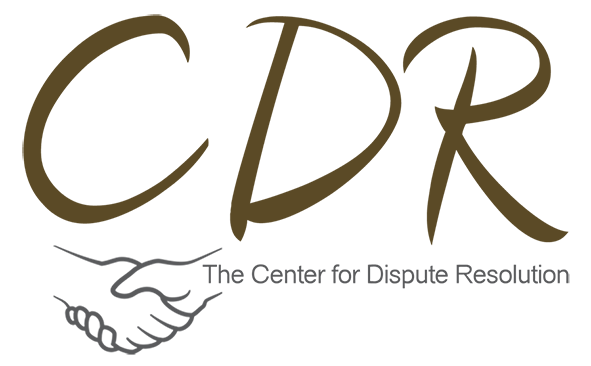
Leaderless in a World Full of Leaders
In 2020, there was roughly $360 billion spent on leadership development worldwide! The U.S. alone accounts for over $165 billion of that amount. If Covid had not caused the disruption that it did that year, this figure would have been tremendously higher.
Despite spending billions of dollars on leadership development, we are a nation that lacks leaders!
Too often, people will read self-help books or will attend leadership development seminars only to return to their place of work to fall back into the same old routine. Rarely do people implement what they’ve learned. Even those who do initially implement their newly learned tactics, they often go back to the status quo after a few weeks.
Causes of the Leadership Deficit
Why does this happen? Why are billions spent on developing these new skills only for it to go to waste? There are several reasons for this, some of which are:
Newton’s First Law of Motion posits that an object in motion will stay in motion with the same speed and in the same direction unless acted upon by an unbalance force. In other words, the desire to change and implement the newly learned leadership skills has a lesser force than the prevailing culture in the workplace – which is to maintain status quo.
Secondly, many leaders, by position and not personal qualities, are uncertain of their own plans or suffer from imposter syndrome. They lack faith in their own abilities to enact change and to lead people effectively. In addition, they may feel that others may view them as being fake and, thus, lack faith in the leader’s ability to lead them.
The main reason can be easily argued to be fear. When learning new leadership skills and tactics, there is always a degree of fear in implementing them once you return to the workplace. Much of this fear is centered around change. I’ve already alluded to how employees are resistant to change (above) but even the identified leader of the organization or unit is resistant to change – which sometimes can be demonstrated by their lack of “buy-in” to their own initiatives.
Leaders of organizations or units are often evaluated by the level of their work unit’s performance and productivity. In many instances, this equates to profits generated, items produced, or services rendered. If everything stays the same, the organizational leader is confident in what their production will be. Change brings uncertainty even if change is needed. Change means breaking old habits, personally and professionally, that have been firmly entrenched over the years. Due to this, many organizational leaders are afraid to implement necessary leadership skill changes because if there is a decline in performance or production, the organizational leader will be blamed and may be removed from their position. Many individuals view the risk as being tremendously greater than the reward, at least personally. In these situations, they are focused more on self-preservation than what is in the best interest of the organization, and this is completely understandable.
Conflict and Leadership
In these cases, leaders will often let their newly learned leadership skills fall to the wayside. There’re also many times where they may view the implementation of these new skills as being the cause of too much potential conflict. For instance, holding employees more accountable may cause conflict with hostility being focused on the organizational leader. In addition, a more accountable work environment may cause some employees to seek employment elsewhere, creating a worker shortage for the leader implementing these newly learned leadership skills.
Conflict is always present in the work environment. Change can cause conflict. Productivity and performance can cause conflict. Competing for resources can cause conflict. The problem isn’t necessarily the conflict but the fact that many organizational leaders do not know how to prevent, mitigate, and work through conflict. Oftentimes, they rely on their authority to “resolve” conflict which normally makes matters worse as it causes bitterness and resentment, and the underlying cause of the conflict is left unresolved.
The most common way that organizational leaders respond to conflict is by simply ignoring the issue with the mindset that things will work themselves out. This is not a characteristic of a true leader! Additionally, these type individuals oftentimes do not see the benefit in seeking services that reduce conflict and workplace violence – they think they’re already doing enough, such services are unnecessary, or they view these services as an expense that will reduce their profits, thus creating a negative image of the organizational leader. True leaders will provide services and resources to ensure the safety of their employees and customers. True leaders will see these services as an investment that will increase the performance and production of their employees while improving workplace morale and creating instances of improved customer service. A true leader views their position as being one of service to their employees and customers.
Organizational leaders are often afraid of conflict. This is one reason why they ignore it but it’s another reason why they don’t hold their employees accountable. They’re afraid that if they hold their employees accountable that it’ll cause conflict between them and the employee(s). Years ago, I had a co-worker who openly bragged about reading two Harry Potter books within a week while on the job. Our supervisor was aware of this as well, yet this employee made the same as the rest of us (who were actually working diligently) and even received the same percentage of a raise when it came time for our annual performance review. I remember asking our supervisor why did this employee receive the same percentage of a raise as the rest of us – or why did this employee receive a raise period. The only response that I received was that the performance evaluation would be done different next year and would be more reflective of our actual work performance – um huh?? This made no sense then nor now and there was no actual change the following year either. Why? Holding the employee accountable would have caused, what the supervisor viewed as, unnecessary conflict – conflict that the supervisor wished to avoid.
What do Organizations, Employees, and Customers Need
In every work setting, we need true leadership. We need and expect true leaders who faithfully and deliberately lead by example – the leader shows up to work on time, the leader stays until their time to leave, they take the same length of lunch breaks as everyone else, and they work as hard, if not harder, than their employees. Basically, they lead by true example! They do not ask their employees to put in more of an effort than they are willing to do themselves. Organizations, employees, and customers expect a true leader to put the needs of the organization, employees, and customers before the needs of the leader. True leaders are expected to make their workplace as safe and free from conflict and workplace violence as they can for the benefit of their employees and customers. True leaders view services such as those focused on conflict and workplace violence reduction as being an investment because they understand how these services can improve work production, performance, and customer care. With approximately 962 American workers being victims of workplace violence every hour, every business should be taking real measures to provide their workers with the skills and knowledge to defuse a hostile situation to reduce violence on the job.
The ultimate truth is that of the $165+ billion spent in the U.S. alone on leadership development materials, much of it is consumed to personally benefit the recipient of the leadership material. In other words, the recipient of such material is only consuming it because he/she feels that it will increase their chance of getting a promotion or raise. Or the leadership seminar they attend may enable them to build connections with others from which they may eventually secure a larger, more beneficial job offer from. This is why the workforce in our country lacks leaders – they’re in it for the wrong reason. Yes, consumption of this leadership material should improve the recipient but the motive for consuming this material should be for the benefit of the organization, the employees, and the customers. Many people in leadership positions have forgotten this. These individuals are oftentimes isolated, secure in their ivory towers within the organization. Safe from the threats and realities that their employees and customers are regularly confronted with daily. So, they don’t lead.
Conclusion
We need leaders. I once worked for a supervisor who advised me that I needed to start putting in overtime hours although we didn’t get paid overtime. I suppose turning in unpaid overtime hours was viewed by him as evidence that a person was being devoted to the job or something. Yet this supervisor regularly arrived to work about an hour late, took 2 hours to go four blocks to the bank and post office, took over an hour for lunch, and frequently left work 30 minutes early. When he was in his office, he mostly stayed on the phone talking to his buddies about hunting and fishing and planning their next trip. Organizations and our nation are suffering from this type of leadership!
If individuals are unwilling to change themselves by implementing what they learn from leadership development opportunities, how can we expect them to lead necessary change to meet the needs of our future reality? Will this reluctance cause organizations to be obsolete? Organizations, employees, and customers need and expect better. We need leadership talent levels to start to finally rise to reflect the actual monetary investment that has been placed on leadership development. When this happens, we’ll see true transformation and improved safety in organizations nationwide.
✅ Resolve disputes effortlessly. ✅ Build stronger relationships. ✅ Subscribe FREE now!
Don't miss out! Join us today. 🚀


Comments are closed